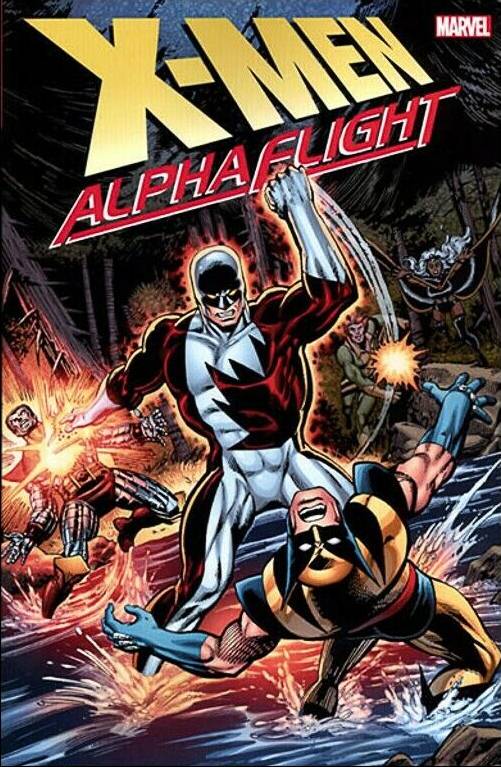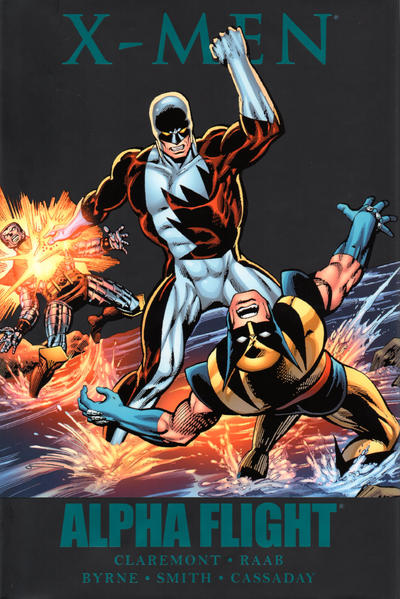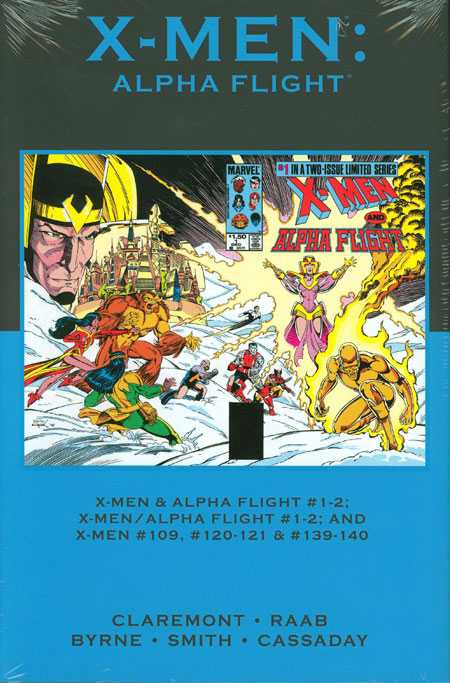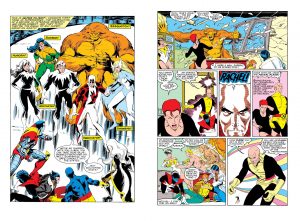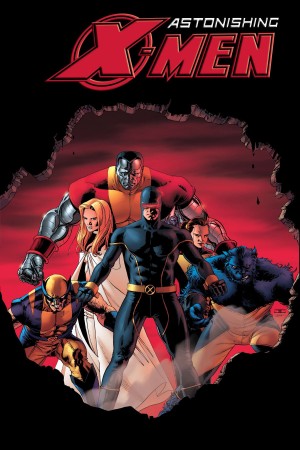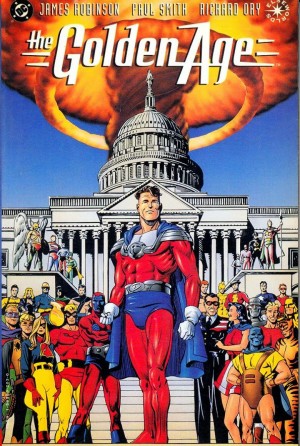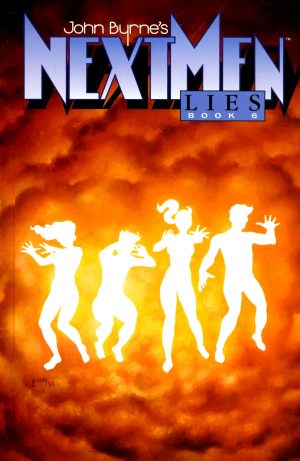Review by Frank Plowright
X-Men: Alpha Flight combines the meetings of the two super teams in the late 1970s and early 1980s by Chris Claremont and John Byrne with a late 1990s reprise by Ben Raab and John Cassaday, spliced with Claremont and Paul Smith’s tale of all humanity could wish for being fulfilled.
Claremont was an early exponent of throwing in a random plot element, then figuring out where it led, accounting for his revelation that Wolverine had once been a member of a Canadian super team. In the opener Guardian has been sent to retrieve him. In isolation, this introduction works satistfactorily, but in light of later revisions it fails, the close relationship between Wolverine and Guardian/Vindicator (both names are used) never really acknowledged. At least Claremont with Byrne co-plotting was unafraid to ring in the changes and introduce mutual respect by the time the complete Alpha Flight met the X-Men. They’re an interesting accumulation of Canadian legends and characteristics, and their reasons for wanting Wolverine’s return make sense when considering how his strengths complement theirs. A third story has Wolverine and Nightcrawler heading North to help Alpha Flight with Sasquatch. All have that Claremont/Byrne action choreography, with the second appearance standing out as the best for introducing the full team and having more going on.
By the time the two teams were co-billed in 1985 both line-ups had changed, and Alpha Flight had progressed to their own series, solely Byrne’s work, but this is Claremont with Paul Smith. Claremont hints at what’s to come early, citing his inspiration, the purpose being the creation of a better world. Humans and mutants can peacefully co-exist and all illness and conditions can be cured. Any seasoned reader will expect it’s all too good to be true, and so it proves, but the inevitable takes a long time to occur. It contrasts the earlier material by restricting the action to the start and finish, while the extremely long middle section is discussion and mystery based with some ethical considerations thrown in. These amount to asking how many sacrifices are acceptable for a better world. Loki’s participation is clever, but contingent on other beings, and also nice is the way the eventual outcome hinges on Loki being inevitably true to himself. Smith’s art is more functional and less decorative than it was on his earlier X-Men material, and overall this really drags.
Ben Raab and John Cassaday’s 1998 story is a continuity implant set shortly after the Claremont/Byrne X-Men period. Cassaday co-plots with Raab, strangely producing a story where the teams only actually meet at the end, except for an enjoyable, but ultimately pointless Danger Room sequence. If not yet the artist he’d become, Cassaday’s already mighty impressive, a shot of silhouetted armoured men flying over New York memorable, but the story never overcomes its homage origins.
As a collection, X-Men: Alpha Flight makes for a nice trip down memory lane in places, but only Claremont and Byrne approach top form, and then only briefly. Those Claremont and Byrne collaborations can also be found in Uncanny X-Men Masterworks volumes three, four and five, while Claremont and Smith’s longer story previously formed the bulk of X-Men: Asgardian Wars and is also found in Marvel Masterworks: Uncanny X-Men Vol. 11.
